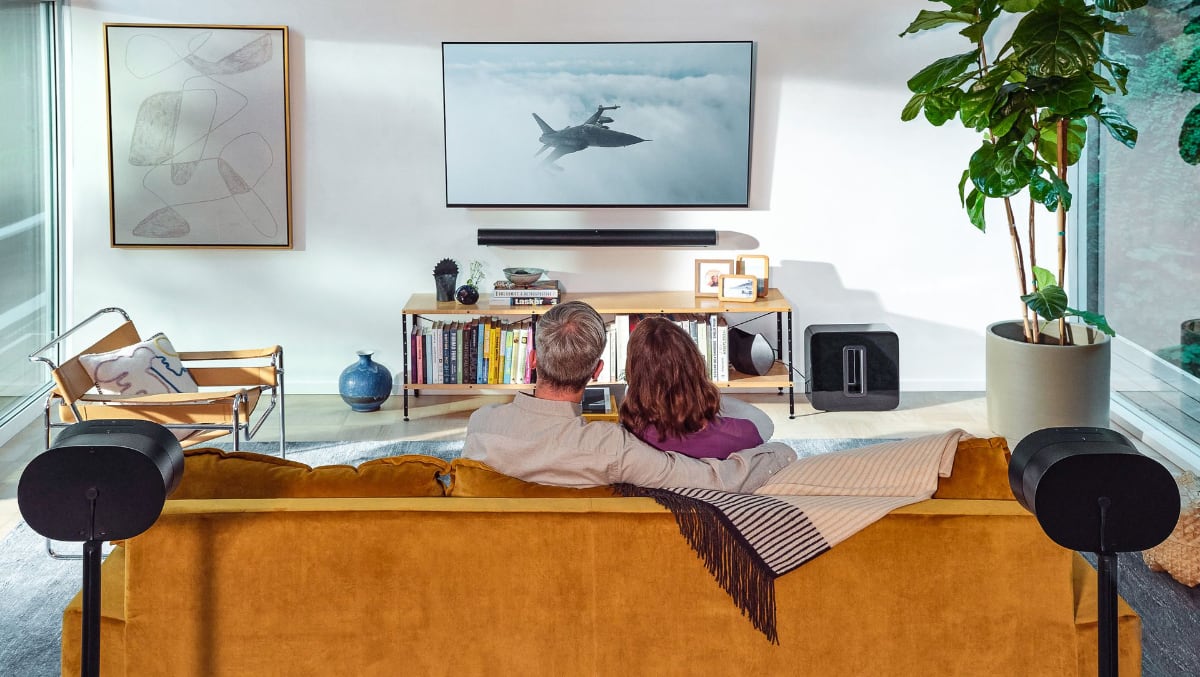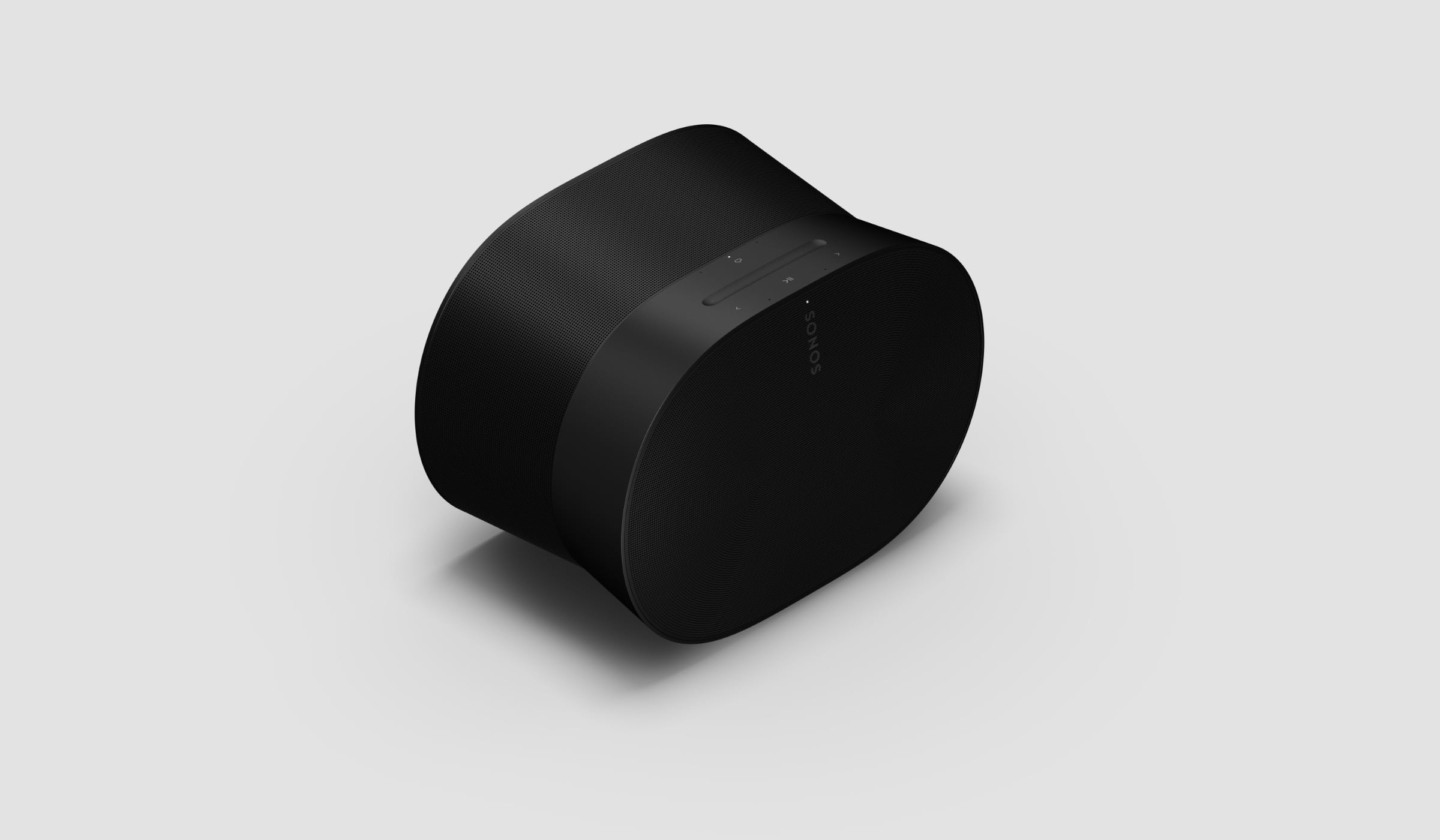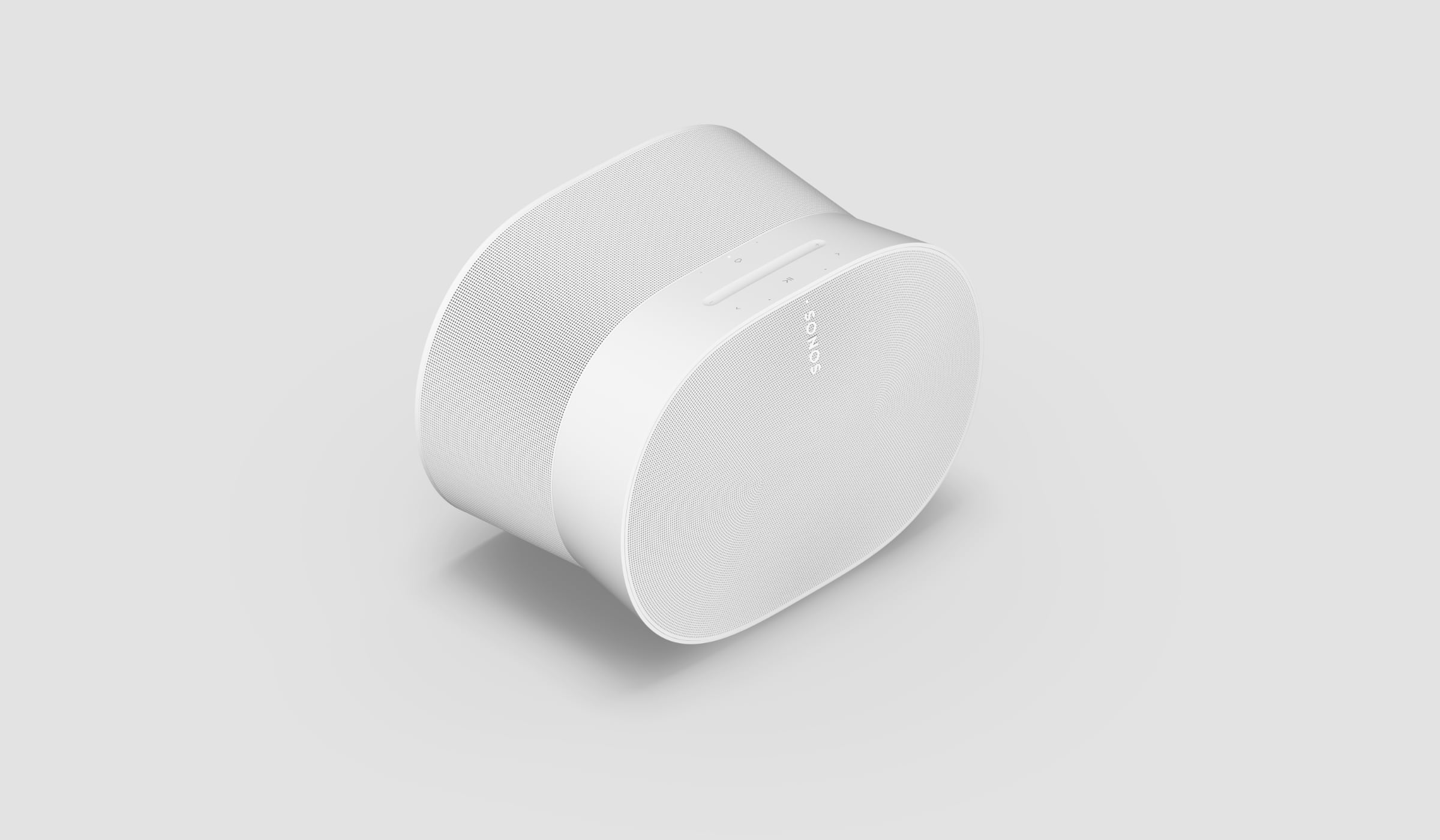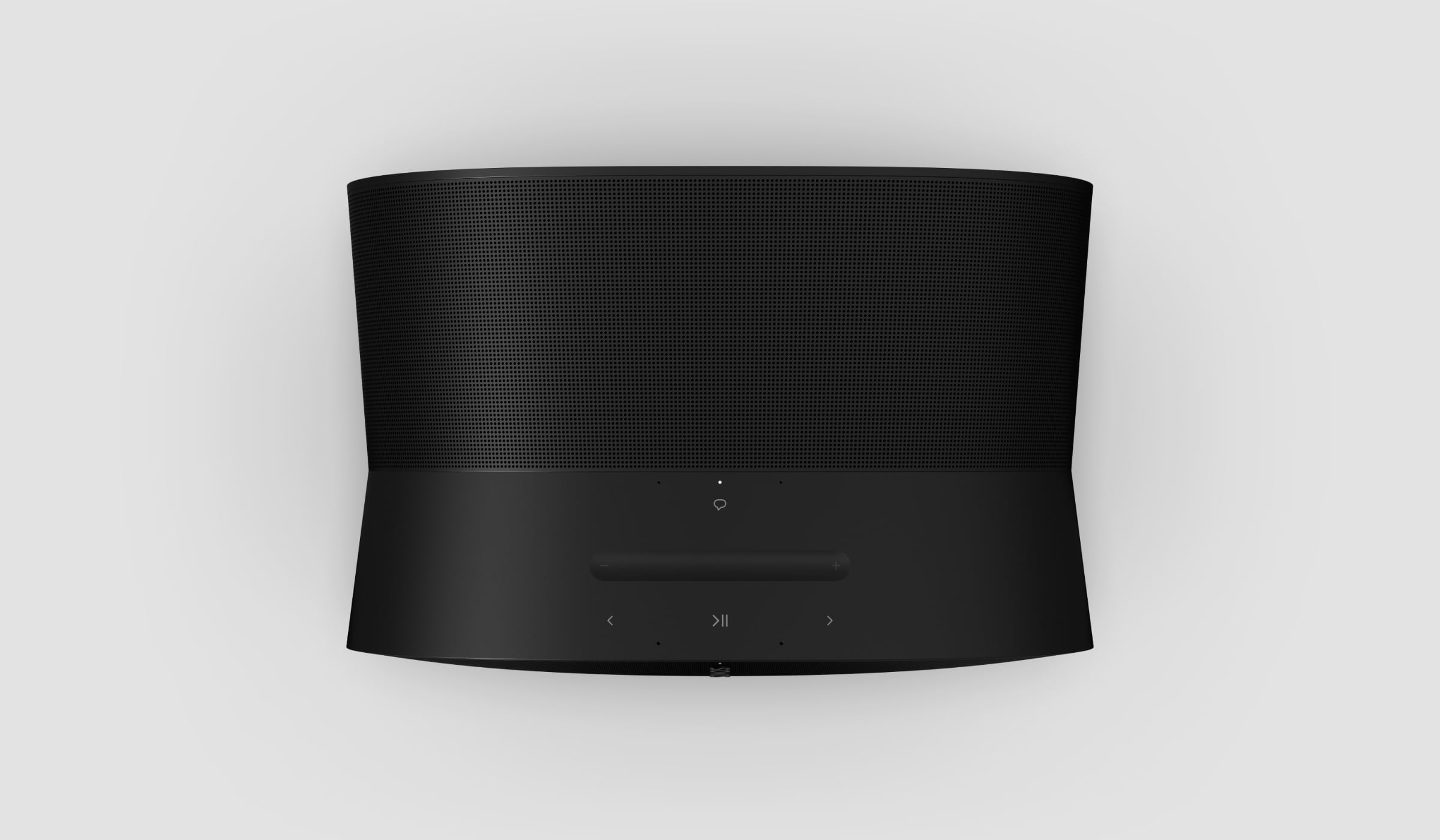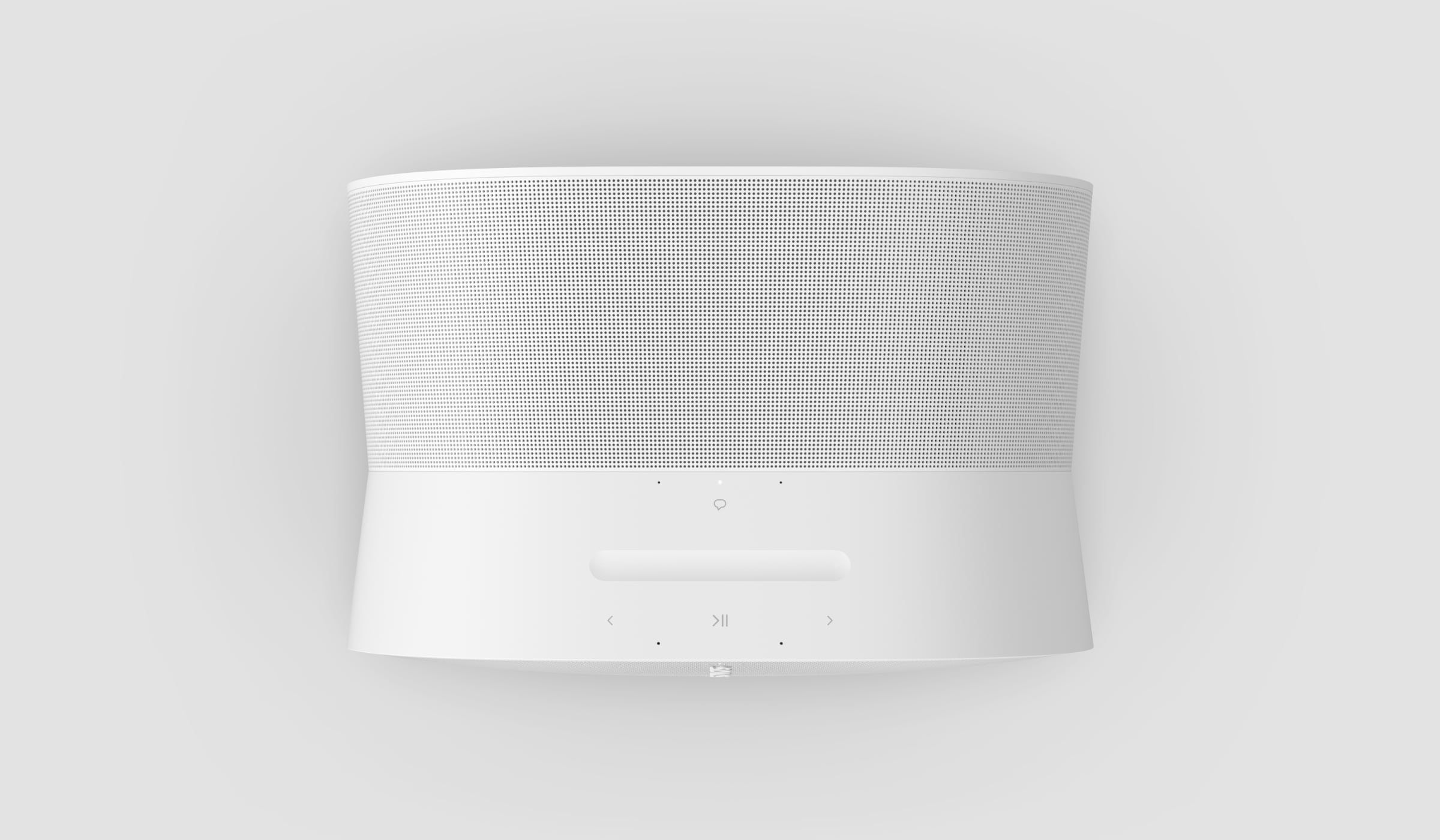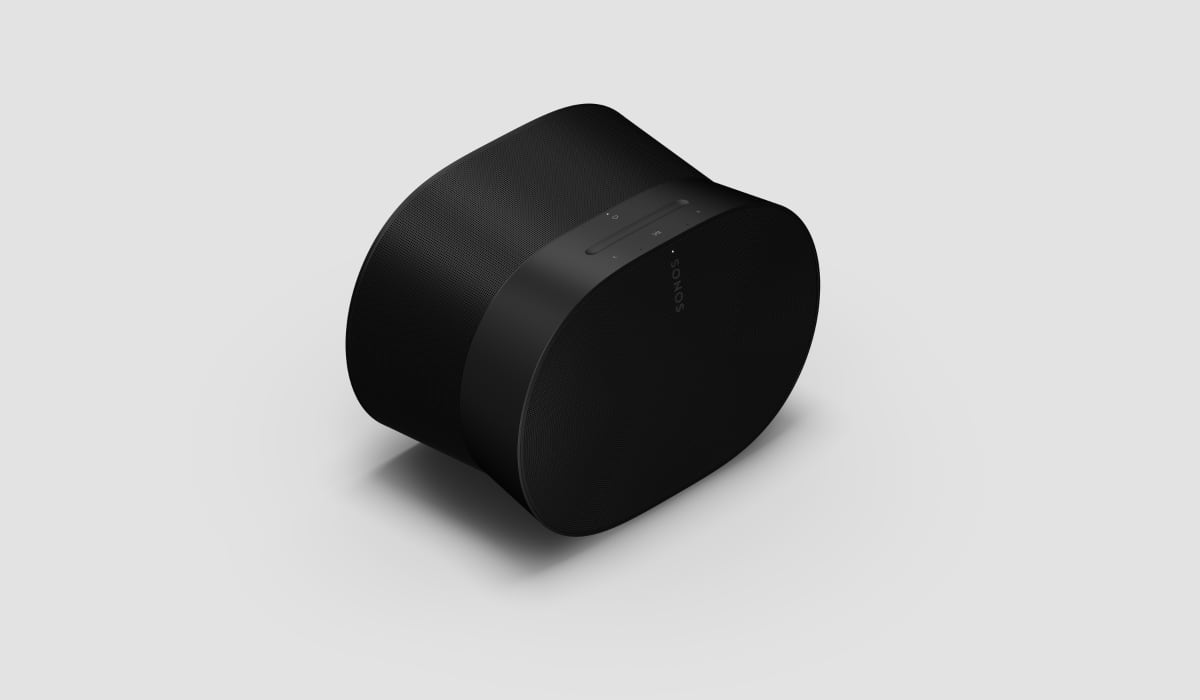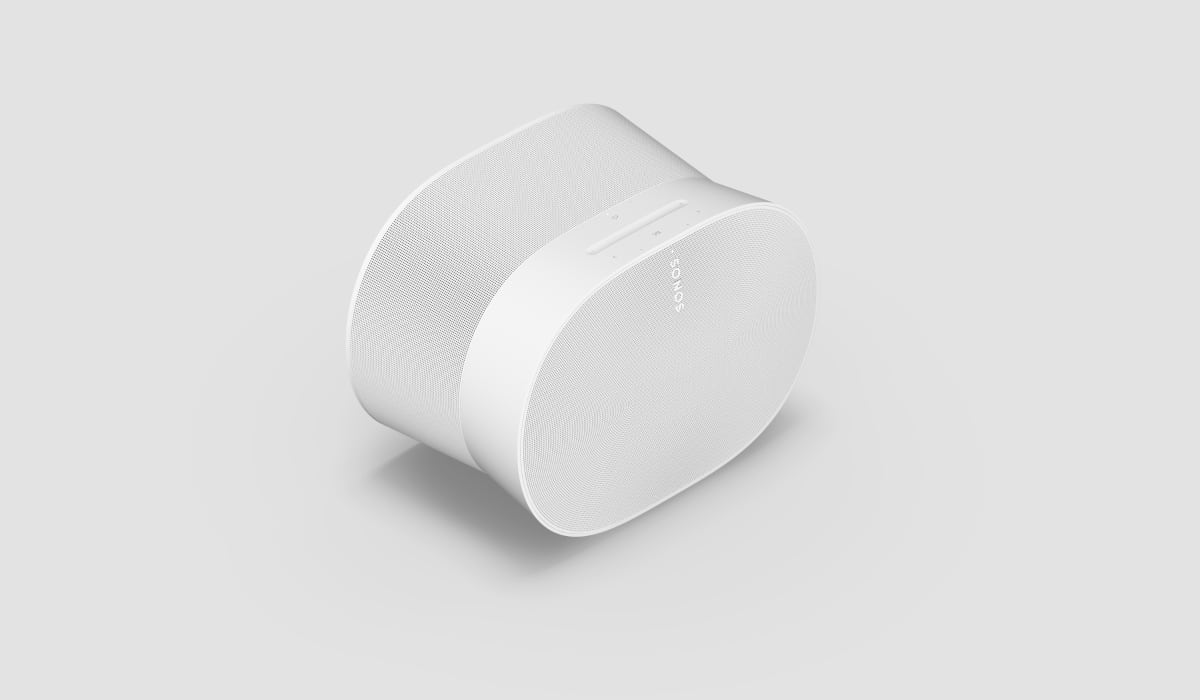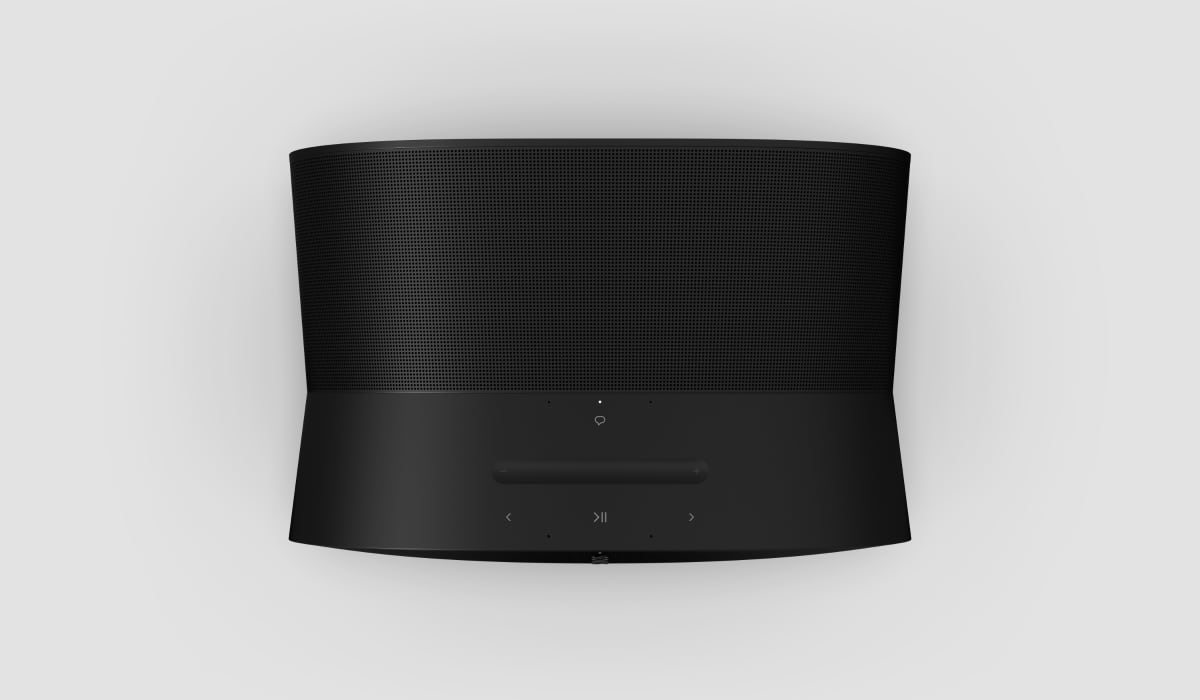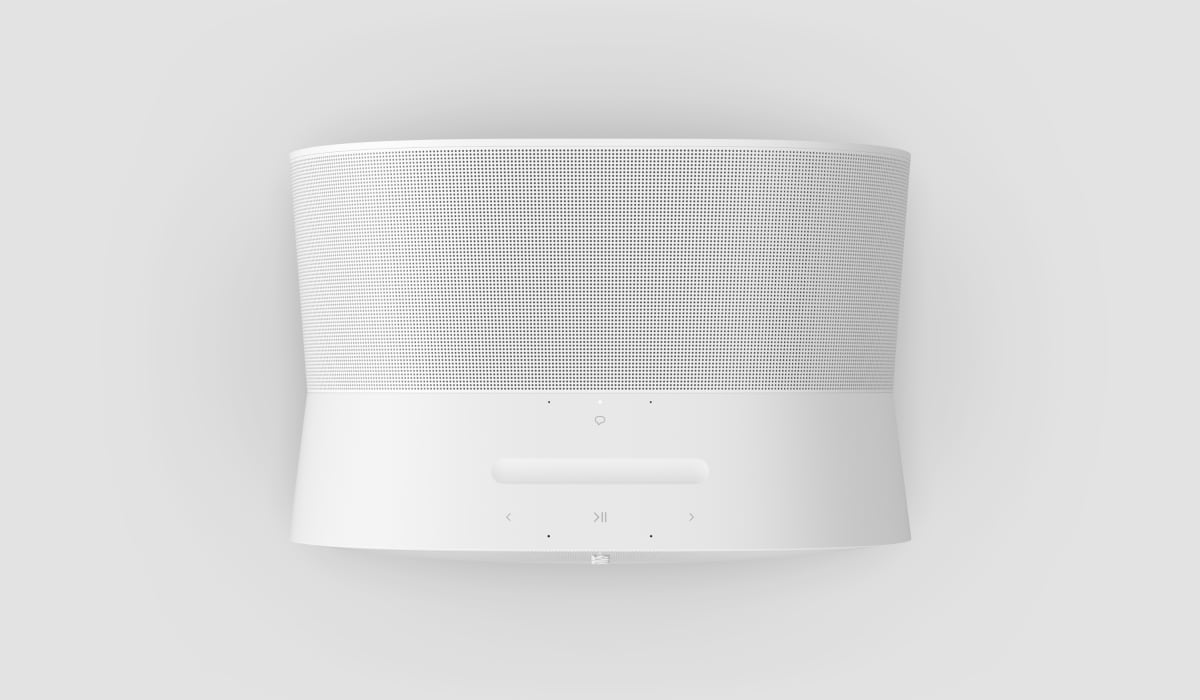Sonos Era 300 + Arc + Sub – specifications
| |
|---|
| Design | Soundbar + 2x rear speakers + subwoofer |
| - color | black or white | | - wall mounting | (sold seperately) |
|
|
| Speakers | 7.1.4 channels (up to 7.2.4) |
|
|
| Audio formats | Dolby and DTS |
| - Dolby Atmos | | | - Dolby TrueHD | | | - Dolby Digital Plus | | | - Dolby Digital | | | - DTS:X | | | - DTS | |
| - MPEG-H | |
| - Hi-Res Audio | | |
|
|
|
| HDMI in/out | |
| - HDMI inputs | | | - HDMI ARC / eARC | / | | - passthrough 4K | | | - passthrough HDR10 | | | - passthrough Dolby Vision | | | - passthrough VRR | | | - passthrough QMS | | |
|
| Inputs | Sonos Arc: 1x Ethernet
Sonos Era 300: Line-in (with adapter) |
| Outputs | HDMI eARC, optical (with adapter) |
| WiFi | (WiFi 4 in Sonos Arc, WiFi 6 in Era 300) |
| Wireless audio protocols | Yes |
| - Chromecast | | | - AirPlay 2 | | | - Bluetooth | (only Era 300 and only when not paired to Arc)
| | - Other | Sonos S2 app, infrared, Google Home, Spotify Connect |
|
|
| In the box | User manual, power cable, HDMI cable, optical audio adapter |
First impressions
Our standard testing setup comprises a Sonos Arc, a Sonos Sub, and a pair of Sonos One speakers serving as rear channels. The Era 300 is intended to replace the One models as the rear channels. While the One is a mono speaker, lacking the capability to project sound upwards or to the sides, the Era 300 offers something different. Its robust exterior conceals several additional drivers including two woofers and four tweeters, the latter of which are positioned to project sound forward, upward, and to the right/left, aiming to deliver a wider soundstage on its own and to effectively cover the Atmos channels in a surround setup.
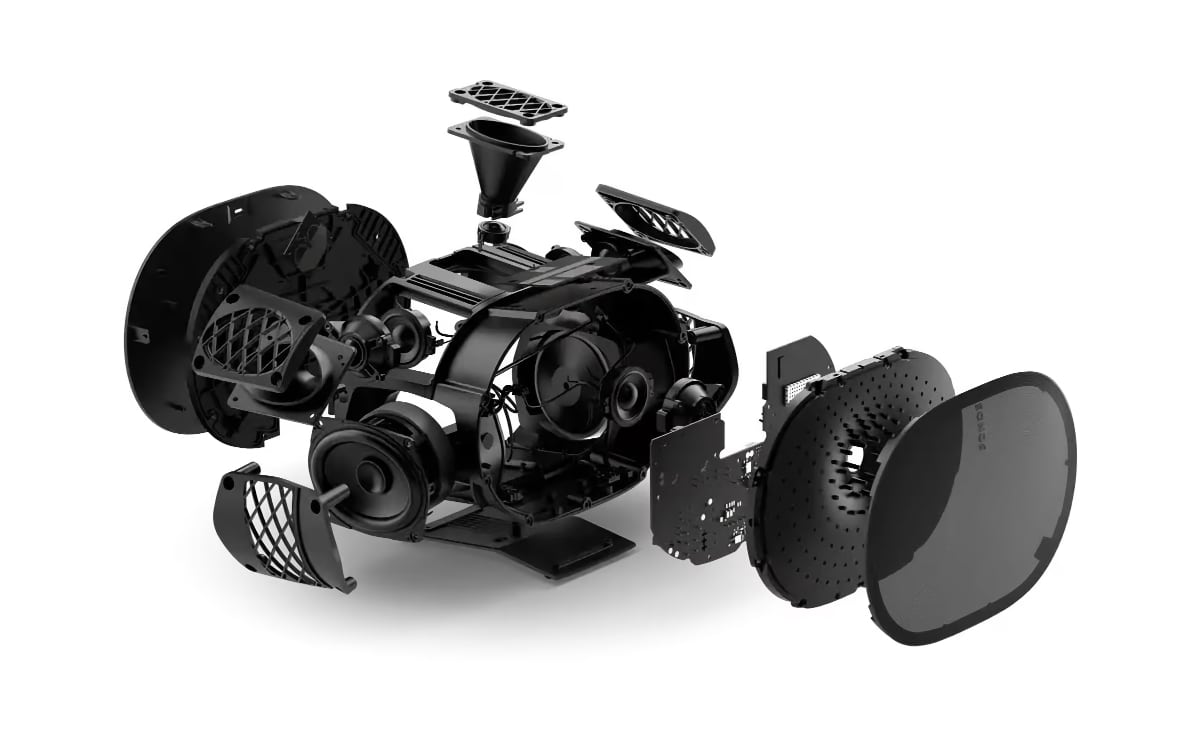
Taking a closer look at the speaker itself, it has few physical buttons or ports. At the top, there's a volume slider, a play/pause button, and buttons for navigating forward/backward through music tracks. On the back, there's a physical switch to enable/disable the microphone for voice assistants, and a small button for speaker pairing – either during setup or when connecting a Bluetooth device.
In terms of connections, there's the obligatory power input and a USB-C port which, with a Sonos AUX adapter, can be used as a line-in and also functions as a LAN dongle if you need to wire the speaker to your network. However, it's worth noting that this adapter is an additional purchase.
The finish on Era 300 is satisfactory and is available in either white or black plastic, depending on your preference. However, in recent years Sonos has shifted from a mix of metal and plastic to a more pronounced plastic exterior. While it may appear attractive, it might not feel particularly premium in your hands. In comparison to other models from both Sonos and competitors, the design might be considered somewhat distinctive. The speaker almost has a waistline that divides the surface's grille structure, aiding in angling the internal drivers to project sound outward into the room. Whether one is a fan of the design or not is a matter of personal taste, but they certainly stand out more in a living space than a set of One speakers.
Unlike the One, the standard wall-mounting solution isn't a swiveling bracket and due to the weight one should carefully consider how to wall-mount the speaker to prevent it from falling. Because of the upward-facing drivers, Sonos recommends flipping the speaker upside down when mounting it near the ceiling, so that sound is directed downward in such cases. Official brackets and floor stands are available, but there's also a variety of dedicated third-party brackets out there.
Set-up
Our focus is on using Era 300 in conjunction with a surround system, such as the Arc in this case. However, to pair the Era with such a system the speakers need to be individually connected to your home network first. The process is relatively straightforward and is managed through Sonos' app, which is a necessity in all Sonos-related scenarios. It's important to note that the Era 300 cannot function as standalone speakers for your TV through an HDMI connection. A soundbar is required, specifically either an Arc or the smaller second-generation Beam.
Era 300 is not compatible with the older models of Playbar, Playbase, the first-generation Beam, or Ray.
For my initial tests, I refrained from connecting the Era 300 to our Arc system and instead paired the two units in a stereo setup to facilitate A/B comparisons with some of the other audio equipment we have on hand. When ready to integrate Era 300 with your Arc system, this is done via the settings menu specifically for the Arc, where options exist for connecting the subwoofer or rear speakers.
Era (or any other Sonos speakers) does not come with a remote control, so volume and music control are managed either through the integration with the surround system – using the TV remote, for example – or by having the app open. However, numerous third-party solutions are available to come to your aid, with options like IKEA or Flic.
For both standalone configurations, stereo pairs, or as part of a surround setup, the next step would be to perform room correction using Sonos' TruePlay feature in their app. Here, iPhone users and now also Android users will be prompted to walk around the room to measure the sound response and create a sound profile that corrects for factors like reflective surfaces. For a surround system, users will also be asked to take measurements in the sweet spot to achieve the best possible Atmos experience from the couch. The options here aren't as diverse as what we've seen on the B&O Beosound Theatre, and you have two modes: TV or Music.
Music sources can either be connected through Sonos' app, making them accessible within the app, or you can utilize AirPlay or Bluetooth (when using Era as a standalone device). It's worth noting that audio quality potentially improves when sources are played through Sonos' app instead of AirPlay, as this provides access to lossless and Atmos audio at a higher bitrate compared to Bluetooth or AirPlay. Atmos will be available on audio devices that support the format. If you group Era with older speakers, the audio format will drop to the lowest common denominator, likely resulting in the loss of Atmos support in this scenario.
During the testing, we had an Apple TV 4K and a PlayStation 5 connected to the TV, and the soundbar was connected via eARC to a Sony AF9.
Listening test: Music
For this test, Era 300 wasn't acquired with the primary goal of evaluating its performance as a music source. Nonetheless, most readers might have some interest in knowing about its performance in this area as well. Therefore, Era 300 was compared to other available audio equipment, including a pair of Sonos One SL speakers, Sonos Arc (with a sub), and a pair of B&O Beolab 9 and Beolab 18 speakers. As all the devices are connected to Sonos, conducting A/B comparisons is straightforward. The music source in this case is Apple Music, which offers Atmos content through the Sonos app. Amazon offers a similar feature but might be less prevalent in certain regions – certainly our part of the world.
The first comparison was between Sonos Era 300 and a pair of Sonos One speakers in stereo configuration. Both were tuned to the same room using TruePlay – which by the way made a significant difference in Era 300's performance – and there were some notable improvements to be heard. Firstly, Era 300 produces more and deeper bass. Additionally, the midrange is more defined and full, and the multiple drivers provide a broader stereo perspective. Opting for a source with Atmos support naturally further widens the soundstage, especially on tracks of this type. However, just as the transition from mono to stereo had its good and bad examples, there are instances in music where the use of new audio formats can be either well-executed or overdone. The best examples delicately mix the audio track, avoiding overuse of Atmos effects just for the sake of it – you've likely encountered stereo tracks where the left/right channels were exploited simply to emphasize the separation between the sides, rather than for any artistic need. Beyond the notable improvement in bass reproduction, Era 300 is also capable of playing louder than the One, making it more suitable for larger rooms.
Expanding the comparison to its forthcoming TV partner, the Arc, it might come as a bit of a surprise how much better Era 300's music reproduction is. Naturally, the Arc doesn't have the same physical volume to accommodate hidden bass drivers, but Era 300 doesn't just outperform in bass response; it also excels in vocal reproduction. The Arc's sound is more closed off and significantly less dynamic than Era 300's, which might raise concerns, as the system doesn't allow for exclusive music playback via Era 300 once they're paired with the Arc in a permanent surround setup. While you can instruct the system to let the rear speakers play "full," unfortunately, the Era's front unit remains inactive. Sonos hasn't provided the capability to connect separate front speakers to their Atmos setups, like pairing four Era 300 speakers with an Arc. For now, they can only function as rear speakers. Music performance was also one of the weaknesses we highlighted in our
review of Sonos Arc back in the day.
Unfortunately, we don't have a set of Sonos Five speakers in our collection for a direct comparison, but these have a more potent bass configuration, so the expectation is that they will likely outperform Era 300 as standalone stereo sources. However, there is a set of B&O Beolab 9 speakers in the same room as the Arc, and Era 300 comes up short when facing off against them in a stereo showdown. It's an entirely unfair comparison, given that the recommended prices of the two products are in entirely different leagues. The depth of the bass, width and clarity of the treble, and punch of the midrange can't be equated.
If I add the last set, B&O Beolab 18, for comparison, the bass performance is more similar, but the fine-tuning of the treble in the Beolab 18 comes into play, providing better vocals and a more balanced sound profile compared to Era 300 – although without the deep bass of Beolab 9. However, Era 300 doesn't leave you feeling disappointed, and as soon as we Atmos comes into play, I would say that the three pairs offer distinct qualities rather than one being supremely better than the other for music playback. Era 300 never quite reaches deep bass levels, so coupling it with a Sonos Sub might be preferable if you're looking to give the sound an extra boost and plan on using them without the Arc for music listening.
When using Era 300 as a standalone music source, attention should be paid to the distance from the ceiling and whether you want to flip the speaker to ensure that all the drivers are optimally utilized. Similarly, placing them in small spaces like a shelf is not advised, as all sides of the speaker need to be unobstructed for optimal sound. Standing freely on a table, perhaps in a kitchen or on a shelf, there are use cases I can think of, but Sonos Five might be more versatile for seamlessly integrating into various furniture setups.
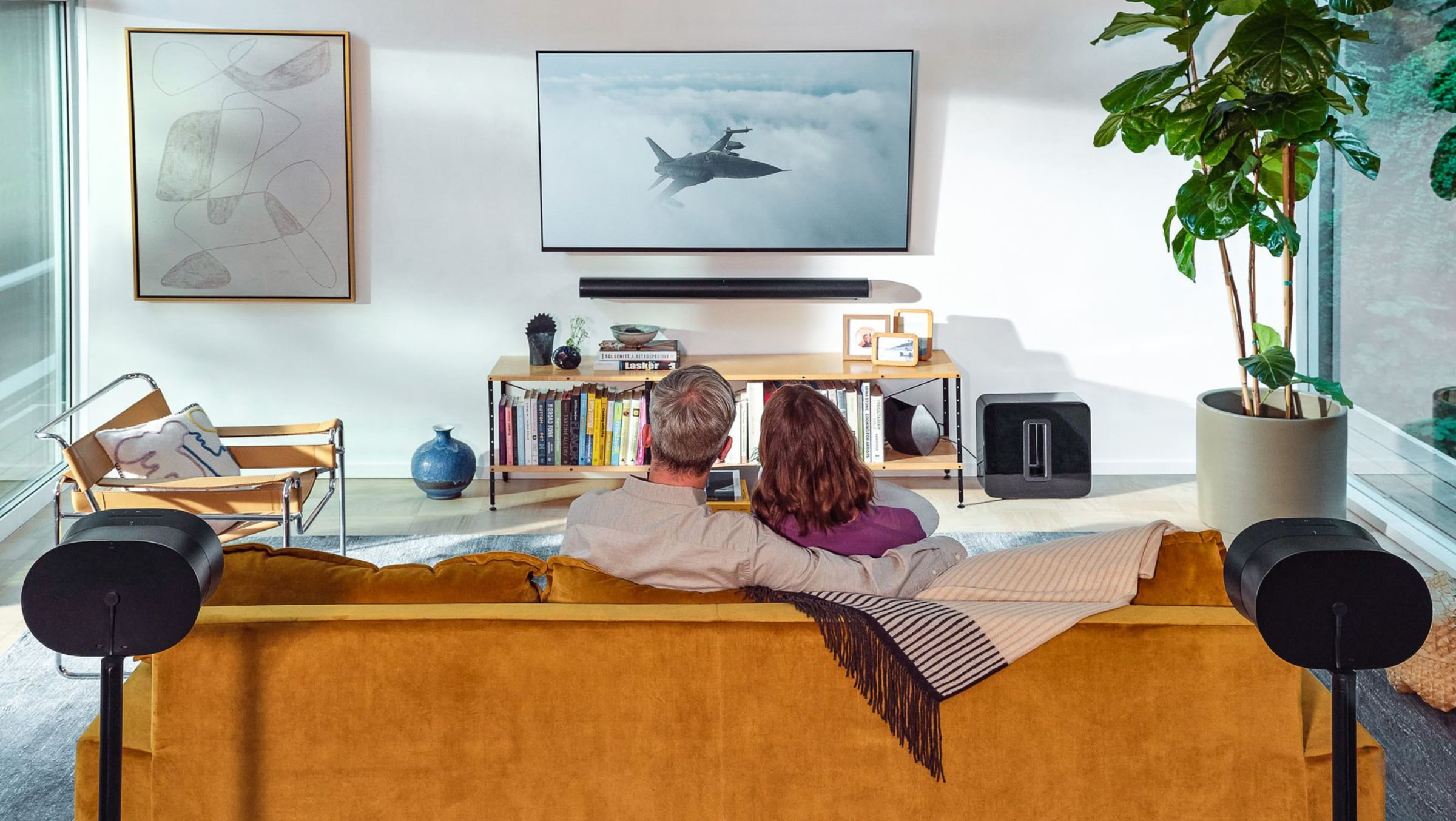
Listening test: Movies and TV
Our typical testing setup comprises the Sonos Arc, a Sonos Sub, and a pair of Sonos One SL speakers. The latter are mono speakers with drivers oriented only forward, meaning they can't supplement with height or side channels. In Era 300, there are side channels for both right and left, a height channel, and a front channel.
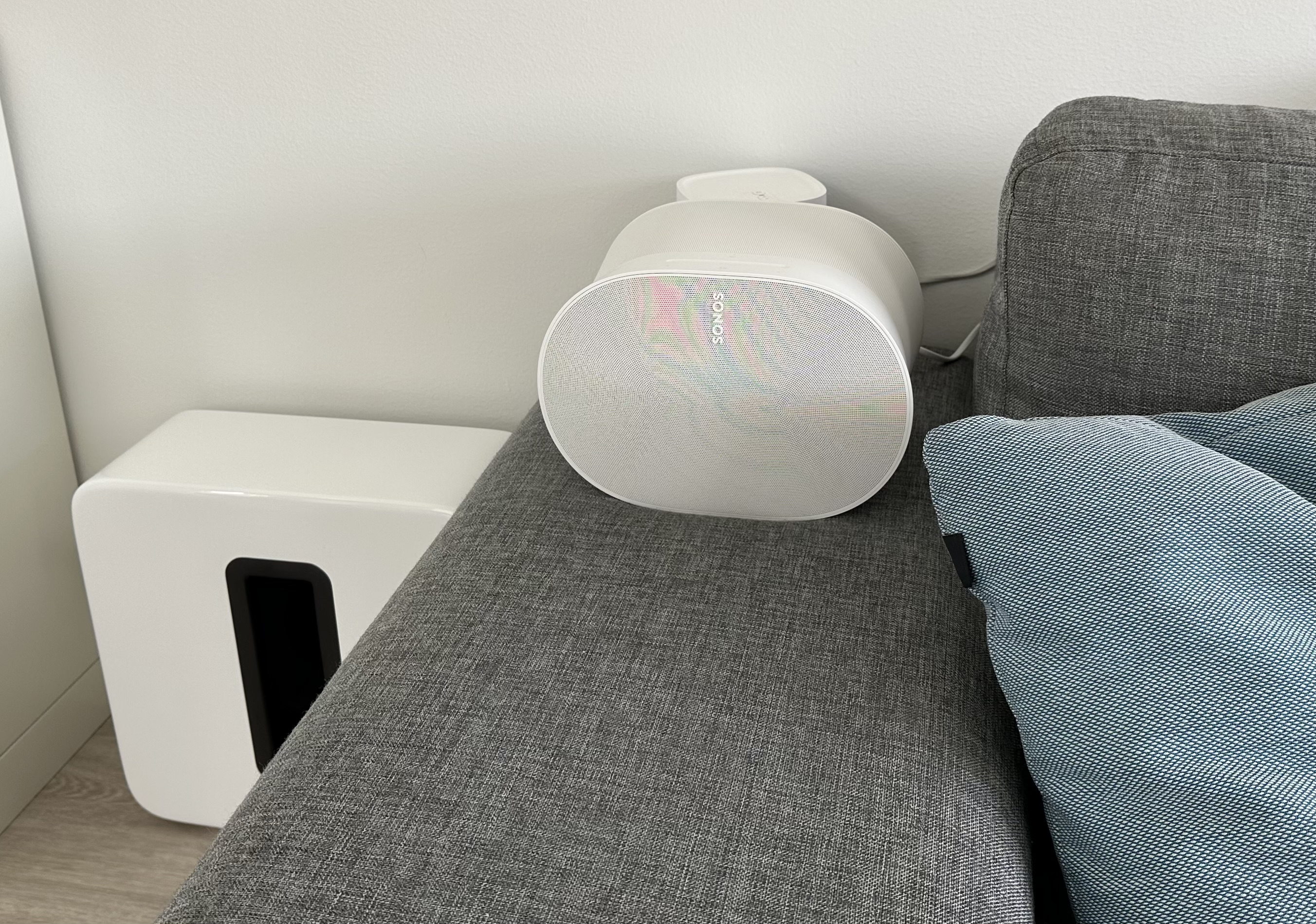
One noticeable aspect when Era 300 is paired with the Arc is that the front channels in the Era 300 stop playing, and the sound only comes from the drivers on the sides of the speaker. Sonos suggests placing the speaker facing the TV and not angled towards the sofa, but it does seem a bit odd that they can't utilize the front unit in the speaker. After all, the Sonos One has functioned this way until now, and if the speakers are positioned further behind the listening area, there might be some concern about losing audio quality. Sonos isn't the only one capable of delivering systems with rear channels that include height drivers, but no other system potentially has four directions in their rear speakers (three if the front unit doesn't play).
The major advantage of adding a pair of Era 300 for movie watching is that you get extra sources for side and top channels. Additionally, you're now getting sound directed towards the listening position through the inward-facing drivers, which can result in a sense of "more sound" from behind in certain situations. With Sonos One, you can angle the speaker to direct sound towards the seating position, optimizing the rear sound. However, in my setup Era's sound was more immersive overall than what's possible with One. I have Era 300 placed on the armrest of the sofa, which positions them almost at ear level. This placement also makes it problematic to position Sonos One correctly without having them directly facing the sofa (they are rear channels, not side channels). This is where Era 300 performs better.
I rewatched several movies from my collection and the general experience is that the room is filled more with sound, especially side sounds being significantly more noticeable compared to Sonos One. Flyovers in movies like
Tenet, Dune, and
Mission Impossible Fallout had a bit more height to them, but not "ceiling height", and not as precisely located as one might desire. It seems to be a recurring theme with reflective channels that the sound doesn't quite reach as high as it should, and it's not as precise as the cinematic experience.
In general, the top channel from Era 300 sounds more like a side channel, similar to how the top channel on the Arc only slightly rises towards the ceiling. Therefore, there's more of the direct sound reaching the ear than the reflected sound. It's possible that this could be improved if Era were hung upside down from the ceiling, but in this case the effect of the side channels might be limited.
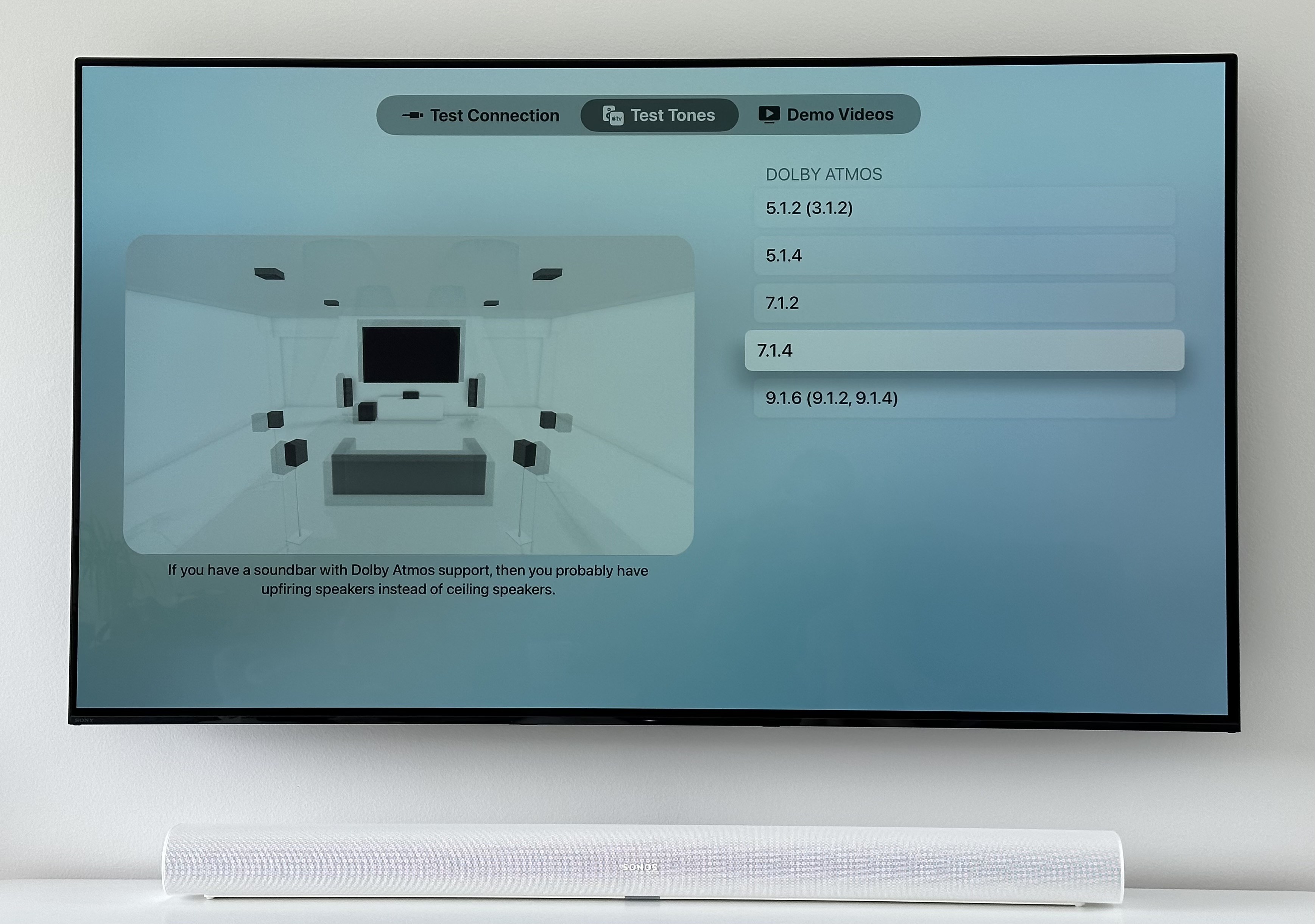
One area where there is a clear difference is in the reproduction of the side and rear channels with a 7.1.2 or 7.1.4 soundtrack. You can distinctly differentiate these two channels when played through Era 300. Even though it might get a bit muddled with the top channel, you get more punch in the sound from the sides, which is a mix of both the Arc and Era's side channels. Several test tracks used for Atmos move around between the different channels, and there's a bit more definition in sounds from the left and right sides. Unfortunately, flyovers are primarily localized in the horizontal plane.
However, the big question probably isn't about whether there's more Atmos or whether they sound better than Sonos One – that's almost expected. The question is more about whether it's justified to shell out more for a pair of rear channels than the soundbar itself, especially considering that they never fully utilize their potential once paired with the Arc. And should you upgrade if you already own a set of Sonos One? I find this quite challenging to answer. Does Era 300 provide a better Atmos experience? Yes, it does. However, I'm left wishing that Sonos offered a bit more flexibility in the setup, so you could use Era 300 + Sub as the primary source for music without the Arc. The weakest link in this setup for music reproduction has now become the soundbar. With Era 300, Sonos has released an Atmos product that is intended to play a supporting role but it outperforms the main character. Era 300 doesn't get the chance to showcase its full potential in the configuration it's intended for, which is, of course, the situation for all rear speakers. But typically, the front center channel would be designed not to be weaker than the rear channels.
Conclusion
The addition of a pair of Era 300 to an existing Sonos Arc setup currently represents the most advanced setup Sonos can offer. With Era 300, you get three channels in the rear speakers (of course, the side channel is shared with the soundbar), which is a step up from Sonos One, which is likely the most commonly used rear speaker in Sonos' lineup.
Era 300 falls in between Sonos One and Sonos Five in terms of both performance and sound quality when it comes to music reproduction. It offers a little extra if you choose to use it as a dedicated music source due to its Dolby Atmos support. However, we miss more flexibility in Sonos' app/system, as we would like to use Era 300 as the primary music source even when paired to the Arc soundbar. This is because the soundbar is clearly the weakest link in terms of music playback in this setup.
For movie watching, Era 300 proves particularly valuable by providing better definition in sides and rear channels. Unfortunately, the top channel often ends up sounding like just another rear channel and still struggles to effectively elevate the sound over the listener's head position.
A pair of Era 300 is a noticeable upgrade compared to a pair of Sonos One in a surround sound setup, but whether the price can be justified depends on your preferences. A complete system consisting of Arc, Era 300, and a Sub comes at a high price, which is also on the higher end when compared to other systems in the mid-range segment.
Price and retailers:
Improved surround vs. Sonos One
Good standalone pair for Atmos music
Sonos’ multiroom universe
Requires recent Sonos soundbar for TV audio
Limited height perspective
Expensive as rear speaker
Choice of materials
Nearest competitors

